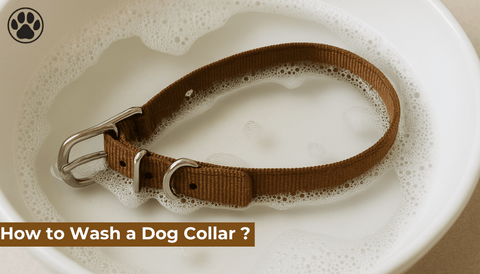
Can Dogs Eat Sardines in Olive Oil?
of reading - words
When it comes to canine nutrition, pet owners are often curious about whether certain human foods are safe and beneficial for their furry friends. One common question is: can dogs eat sardines in olive oil? Sardines are known for their nutritional value, but olive oil raises additional concerns. This article explores the potential benefits and risks of feeding sardines in olive oil to dogs, offering practical advice for dog owners.
Are Sardines Safe for Dogs?
Sardines are a healthy and highly nutritious food for dogs. These small, oily fish are packed with essential nutrients, including:
- Omega-3 Fatty Acids: Promotes healthy skin, a shiny coat, and supports brain function.
- Protein: A vital macronutrient for muscle development and overall energy.
- Calcium and Phosphorus: Strengthens bones and teeth.
- Vitamins D and B12: Boosts immune health and aids in nerve function.
Because sardines are low on the food chain, they contain minimal mercury levels compared to larger fish like tuna or swordfish, making them a safer choice for dogs.
Is Olive Oil Safe for Dogs?
Olive oil is generally safe for dogs in moderation. It contains healthy monounsaturated fats and antioxidants, which can support heart health, improve digestion, and provide anti-inflammatory benefits. However, consuming too much olive oil can lead to gastrointestinal upset or unnecessary calorie intake, which may contribute to weight gain.
Can Dogs Eat Sardines in Olive Oil?
Yes, dogs can eat sardines in olive oil, but there are some important considerations:
- Moderation is Key: While olive oil is not harmful in small amounts, excessive consumption can lead to digestive upset or obesity in dogs.
- Avoid Additional Seasonings: Sardines often come canned with added salt, spices, or other flavorings, which can be harmful to dogs. Always check the label for plain sardines in olive oil without additional additives.
- Consider Your Dog's Diet: If your dog is already consuming a balanced diet, the additional calories from olive oil should be accounted for to avoid overfeeding.
Benefits of Sardines in Olive Oil for Dogs
-
Supports Skin and Coat Health The combination of omega-3 fatty acids from sardines and the healthy fats in olive oil can promote a glossy coat and reduce issues like dry, flaky skin.
-
Boosts Joint Health Omega-3 fatty acids and the anti-inflammatory properties of olive oil can help reduce joint inflammation, making sardines in olive oil particularly beneficial for older dogs or those with arthritis.
-
Improves Heart Health Sardines contain nutrients like taurine, which supports cardiovascular health, while olive oil can help lower bad cholesterol levels.
-
Enhances Cognitive Function DHA, an omega-3 found in sardines, is known to support brain health in both puppies and senior dogs.
Potential Risks of Sardines in Olive Oil for Dogs
-
Excessive Calories Sardines in olive oil can be calorie-dense, which may contribute to weight gain if not fed in moderation.
-
Digestive Upset Dogs with sensitive stomachs may experience diarrhea or vomiting if introduced to sardines in olive oil too quickly.
-
High Sodium Content Some canned sardines contain added salt, which can be harmful to dogs, especially those with heart or kidney conditions.
-
Allergies While rare, some dogs may be allergic to fish or olive oil. Monitor your dog for any signs of allergic reactions, such as itching, swelling, or gastrointestinal issues.
How to Feed Sardines in Olive Oil to Dogs
-
Choose the Right Product Opt for canned sardines in olive oil with no added salt, spices, or preservatives. Alternatively, fresh sardines cooked in a small amount of olive oil can be a healthier option.
-
Serve in Moderation A small dog might only need one sardine per week, while larger dogs may tolerate up to three or four. Adjust portion sizes based on your dog’s weight, activity level, and overall diet.
-
Mix with Regular Food Adding sardines to your dog’s regular food can make meals more appealing and provide an extra nutritional boost.
-
Monitor Your Dog Watch for any signs of digestive upset or allergic reactions after introducing sardines in olive oil to your dog’s diet.
Alternatives to Sardines in Olive Oil
If you’re concerned about olive oil’s calorie content, consider these alternatives:
- Sardines in Water: A lower-calorie option that still provides essential nutrients.
- Fresh Sardines: Cooked without oil or seasonings.
- Other Fish: Salmon or mackerel can also be healthy options, but ensure they are prepared plainly and are low in mercury.
Frequently Asked Questions
Q: Can puppies eat sardines in olive oil?
Yes, but in smaller quantities. Puppies’ digestive systems are still developing, so introduce sardines in olive oil gradually and consult your vet for portion recommendations.
Q: How often can I feed my dog sardines in olive oil?
For most dogs, feeding sardines once or twice a week is sufficient to provide nutritional benefits without overloading on calories.
Q: Are there any breeds that should avoid sardines in olive oil?
No specific breed is particularly at risk, but dogs with obesity, pancreatitis, or dietary restrictions may need to avoid this food. Always consult your veterinarian for personalized advice.
Q: Can sardines in olive oil help with shedding?
Yes, the omega-3 fatty acids in sardines can reduce excessive shedding and improve overall coat health.
Q: Should I rinse canned sardines before feeding them to my dog?
If the sardines contain added salt, rinsing them can help reduce sodium levels before serving.




